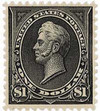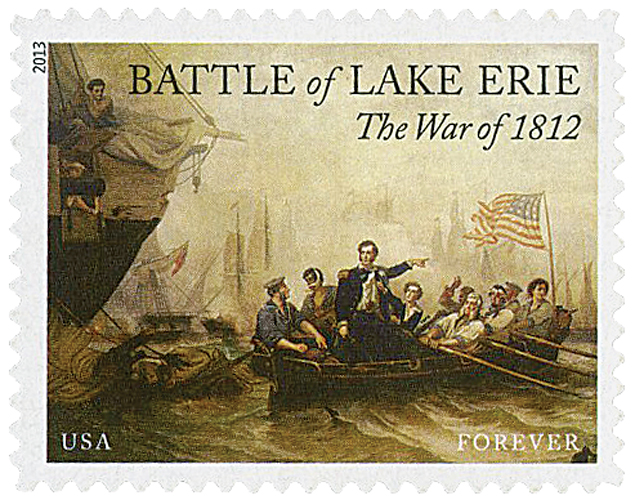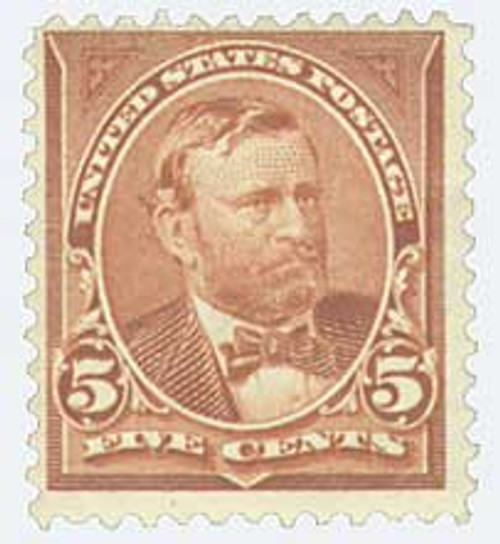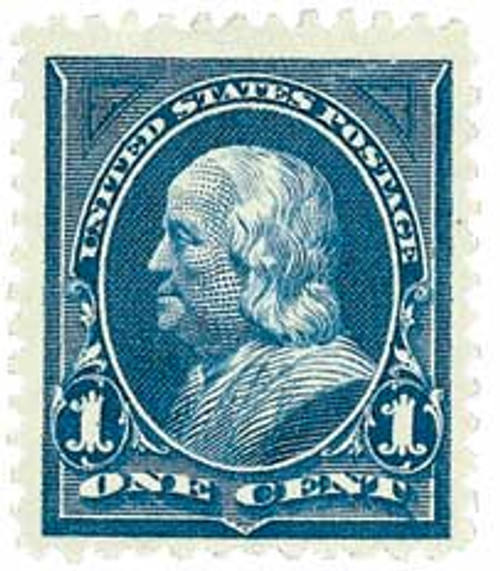
# 276A - 1895 $1 Perry, black, double line watermark, type II
1895 $1 Perry
Type II
Issue Quantity: 63,803
Printed by: Bureau of Engraving and Printing
Watermark: Double line USPS
Perforation: 12
Color: Black
U.S. #276A was issued on August 12, 1895, and used until it was replaced by the $1 of the Series on 1902. Because it was printed with the same plates as the unwatermarked 1894 Bureau Issues, the $1 Perry is also found with both Type I and II varieties.
The Battle Of Lake Erie
Shortly after the United States declared war in 1812, Great Britain seized control of Lake Erie; already having two ships in service there – the Queen Charlotte and the General Hunter. At the time, the Americans only had one ship on the lake, the USS Adams, which was later captured by the British when they took Detroit.
In late 1812, the US government commissioned the construction of a fleet of ships to protect Lake Erie. By March of the following year, Master Commandant Oliver Hazard Perry arrived at Presque Isle, Pennsylvania, to take command of the fleet and oversee construction. By mid-July, his squadron was nearly complete, though not yet fully manned. In the meantime, the British forces, led by Commander Robert Heriot Barclay, had kept a close watch on the Americans and maintained a blockade at Presque Isle for 10 days in late July. The British were unable to attack, as their ships could not pass through the sandbar that had just five feet of water over it.

On July 29, Barclay and the British ships left the harbor, either to get supplies, attend a banquet in his honor, or to catch the Americans off guard upon their return. With the British fleet gone, Perry immediately began the exhaustive task of moving his ships across the sandbar. When Barclay returned four days later, he found that Perry had moved all his gunboats and smaller brigs across the sandbar. Barclay retreated to wait for the Detroit to be completed. Over the next few weeks, Perry got more sailors and established an anchorage in Ohio’s Put-In-Bay. For five weeks, Barclay was unable to deliver much-needed supplies to Amherstburg, so he had no choice but to battle with Perry.
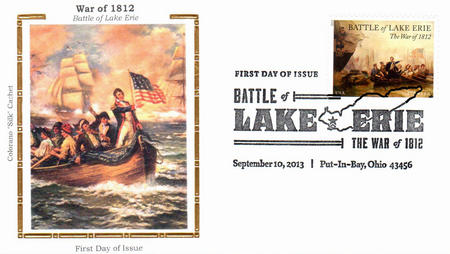
In the early hours of September 10, American sailors noticed Barclay’s ships coming toward them and immediately left their anchorage. Early on, the British had the wind in their favor, which conversely made the Americans approach much slower than Perry had hoped. He had planned to get his two main brigs, his flagship Lawrence and the Niagara into firing range quickly but the light wind prevented this. For at least 20 minutes, the long guns of the Detroit battered the Lawrence as it made its slow approach. When the Lawrence was finally within range at about 12:45, it was not as effective as he had hoped, because the sailors had overloaded the cannons.
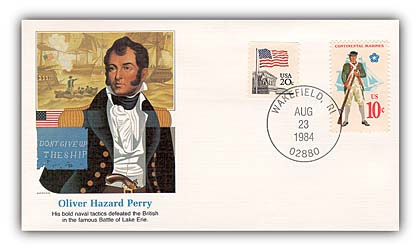
Meanwhile, the Niagara was even farther away from the action and went largely undamaged. The American gunboats in the rear of the battle line were successfully hitting the British ships, but could not prevent the damage being done to the Lawrence. Four-fifths of the Lawrence’s crew were killed or wounded. When the Lawrence’s last gun was unusable, Perry removed the ship’s battle flag and rowed a half-mile through heavy gunfire to assume command of the Niagara (as shown on US #4805).
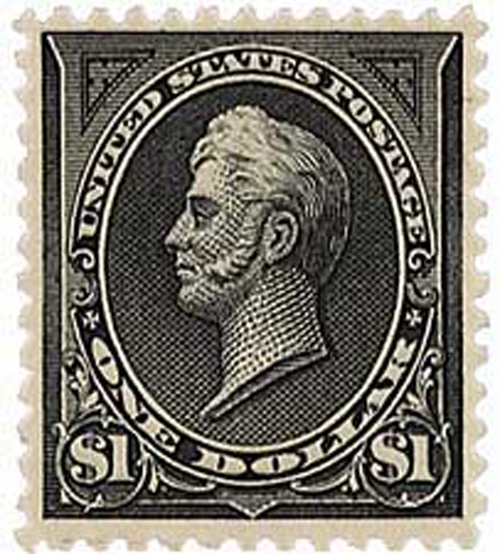
In the meantime, two British ships, the Detroit and Queen Charlotte, collided – as they had become unmanageable due to damaged rigging. Nearly all the British officers were killed or severely wounded, with Barclay among those hurt. Many of the smaller British ships began to disperse and they expected the Americans to retreat. However, Perry ordered the schooners to come closer to the action and steered the Niagara toward the damaged British ships, with the strengthening wind now on his side. The American ships successfully moved through the British line, forcing their surrender by 3 p.m. Despite winning the battle aboard the Niagara, Perry insisted on receiving the British surrender on the deck of the Lawrence, so they could see the terrible price his men had paid.
With the battle over, Perry wrote two victory letters. To General William Henry Harrison he said, “We have met the enemy and they are ours. Two ships, two brigs, one schooner, and one sloop.” And to Secretary of the Navy William Jones, he said, “It has pleased the Almighty to give to the arms of the United States a signal victory over their enemies on this lake. The British squadron… have this moment surrendered to the force under my command after a sharp conflict.” Perry’s important victory on Lake Erie not only secured the lake under American control, but also changed the course of the war, leading to America’s absolute independence from Britain and establishment of peaceful relations between the United States, Great Britain, and Canada.
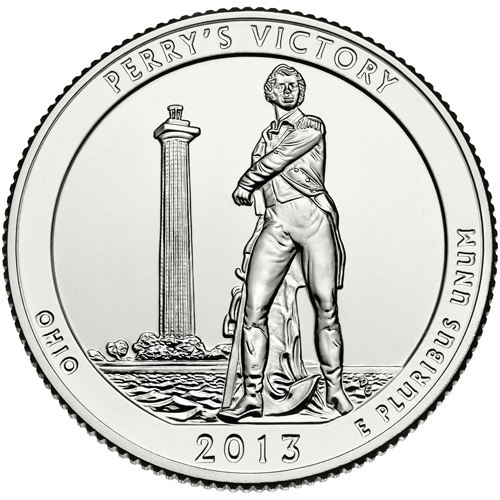
In the early 1900s, talks began concerning some way to commemorate Perry’s victory at Lake Erie. Construction on the memorial began in 1912 in Put-In-Bay, Ohio. Beneath the monument’s stone floor are the bodies of six officers killed in the battle – three British and three American. The monument was officially dedicated on July 31, 1931. Four years later, President Franklin D. Roosevelt established it as Perry’s Victory and International Peace Memorial National Monument.
At 352 feet tall, the monument is the world’s most massive Doric (Greek style) column. It is also one of the tallest monuments in the United States (after the Gateway Arch, San Jacinto Mo
1895 $1 Perry
Type II
Issue Quantity: 63,803
Printed by: Bureau of Engraving and Printing
Watermark: Double line USPS
Perforation: 12
Color: Black
U.S. #276A was issued on August 12, 1895, and used until it was replaced by the $1 of the Series on 1902. Because it was printed with the same plates as the unwatermarked 1894 Bureau Issues, the $1 Perry is also found with both Type I and II varieties.
The Battle Of Lake Erie
Shortly after the United States declared war in 1812, Great Britain seized control of Lake Erie; already having two ships in service there – the Queen Charlotte and the General Hunter. At the time, the Americans only had one ship on the lake, the USS Adams, which was later captured by the British when they took Detroit.
In late 1812, the US government commissioned the construction of a fleet of ships to protect Lake Erie. By March of the following year, Master Commandant Oliver Hazard Perry arrived at Presque Isle, Pennsylvania, to take command of the fleet and oversee construction. By mid-July, his squadron was nearly complete, though not yet fully manned. In the meantime, the British forces, led by Commander Robert Heriot Barclay, had kept a close watch on the Americans and maintained a blockade at Presque Isle for 10 days in late July. The British were unable to attack, as their ships could not pass through the sandbar that had just five feet of water over it.

On July 29, Barclay and the British ships left the harbor, either to get supplies, attend a banquet in his honor, or to catch the Americans off guard upon their return. With the British fleet gone, Perry immediately began the exhaustive task of moving his ships across the sandbar. When Barclay returned four days later, he found that Perry had moved all his gunboats and smaller brigs across the sandbar. Barclay retreated to wait for the Detroit to be completed. Over the next few weeks, Perry got more sailors and established an anchorage in Ohio’s Put-In-Bay. For five weeks, Barclay was unable to deliver much-needed supplies to Amherstburg, so he had no choice but to battle with Perry.

In the early hours of September 10, American sailors noticed Barclay’s ships coming toward them and immediately left their anchorage. Early on, the British had the wind in their favor, which conversely made the Americans approach much slower than Perry had hoped. He had planned to get his two main brigs, his flagship Lawrence and the Niagara into firing range quickly but the light wind prevented this. For at least 20 minutes, the long guns of the Detroit battered the Lawrence as it made its slow approach. When the Lawrence was finally within range at about 12:45, it was not as effective as he had hoped, because the sailors had overloaded the cannons.

Meanwhile, the Niagara was even farther away from the action and went largely undamaged. The American gunboats in the rear of the battle line were successfully hitting the British ships, but could not prevent the damage being done to the Lawrence. Four-fifths of the Lawrence’s crew were killed or wounded. When the Lawrence’s last gun was unusable, Perry removed the ship’s battle flag and rowed a half-mile through heavy gunfire to assume command of the Niagara (as shown on US #4805).

In the meantime, two British ships, the Detroit and Queen Charlotte, collided – as they had become unmanageable due to damaged rigging. Nearly all the British officers were killed or severely wounded, with Barclay among those hurt. Many of the smaller British ships began to disperse and they expected the Americans to retreat. However, Perry ordered the schooners to come closer to the action and steered the Niagara toward the damaged British ships, with the strengthening wind now on his side. The American ships successfully moved through the British line, forcing their surrender by 3 p.m. Despite winning the battle aboard the Niagara, Perry insisted on receiving the British surrender on the deck of the Lawrence, so they could see the terrible price his men had paid.
With the battle over, Perry wrote two victory letters. To General William Henry Harrison he said, “We have met the enemy and they are ours. Two ships, two brigs, one schooner, and one sloop.” And to Secretary of the Navy William Jones, he said, “It has pleased the Almighty to give to the arms of the United States a signal victory over their enemies on this lake. The British squadron… have this moment surrendered to the force under my command after a sharp conflict.” Perry’s important victory on Lake Erie not only secured the lake under American control, but also changed the course of the war, leading to America’s absolute independence from Britain and establishment of peaceful relations between the United States, Great Britain, and Canada.

In the early 1900s, talks began concerning some way to commemorate Perry’s victory at Lake Erie. Construction on the memorial began in 1912 in Put-In-Bay, Ohio. Beneath the monument’s stone floor are the bodies of six officers killed in the battle – three British and three American. The monument was officially dedicated on July 31, 1931. Four years later, President Franklin D. Roosevelt established it as Perry’s Victory and International Peace Memorial National Monument.
At 352 feet tall, the monument is the world’s most massive Doric (Greek style) column. It is also one of the tallest monuments in the United States (after the Gateway Arch, San Jacinto Mo



